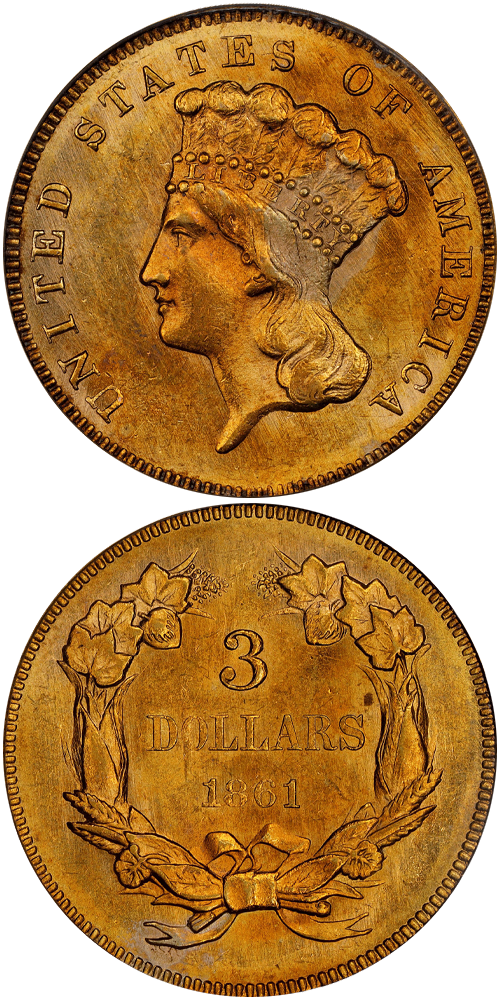1861 Gold Three Dollar
Never a popular denomination in commerce since its inception in 1854, by 1861 the three-dollar gold series had settled into a pattern of limited yearly circulation strike mintages that would continue almost without exception until its end in 1889. The Philadelphia Mint produced just 5,959 circulation strikes during the first year of the Civil War, this being the last year in which gold coins were paid out at face value. After gold specie payments were suspended on December 28, 1861, what few three-dollar gold pieces were held by Northern bullion dealers, banks and exchange offices could be obtained only by paying a premium in paper money. Few, if any, did for the three-dollar gold piece did not circulate in the East or Midwest for the remainder of the Civil War and continuing into the Reconstruction era. While gold coins continued to circulate on the West Coast, the unpopularity of the three-dollar denomination meant that few such pieces were seen in California, and than again mostly earlier dated examples from the 1850s.
Produced in limited numbers and seeing very little commercial use, it is little wonder that the circulation strike 1861 three-dollar gold issue is represented by only a few hundred coins in numismatic circles, virtually all of which are in higher circulated or low Mint State grades. Most EF and AU survivors were saved as part of bank reserves and snatched up by numismatic dealers during the early 20th century. Mint State coins are far rarer - Q. David Bowers and Douglas Winter, 2005, account for just 35 to 50 examples - and likely survived purely as a matter of chance.
The example to the left was sold by Stack's Bowers Galleries in the Spring 2023 Showcase Auction, where it realized $36,000.






